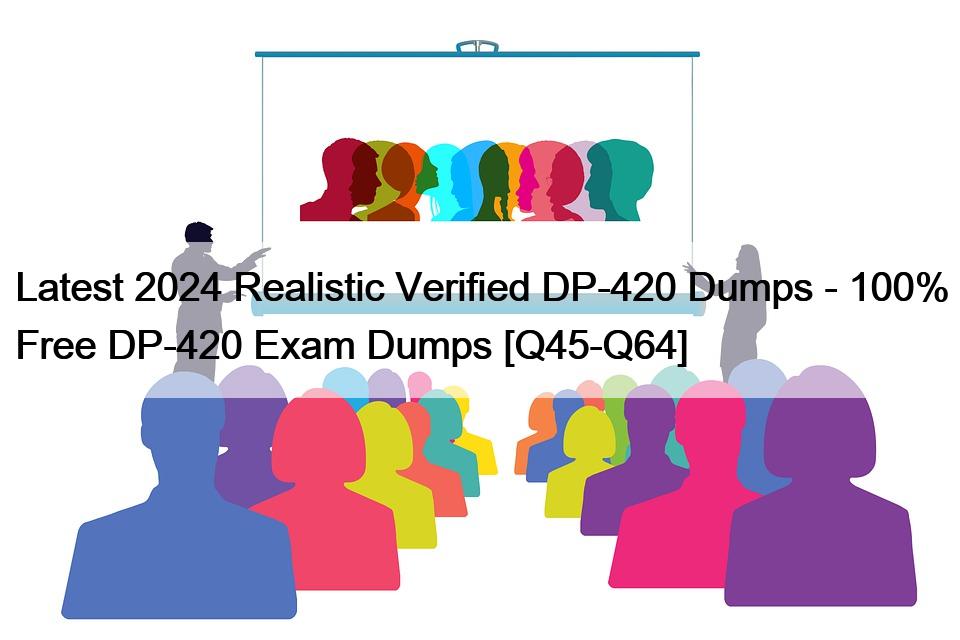Latest 2024 Realistic Verified DP-420 Dumps – 100% Free DP-420 Exam Dumps [Q45-Q64]

Latest 2024 Realistic Verified DP-420 Dumps – 100% Free DP-420 Exam Dumps
Get 2024 Updated Free Microsoft DP-420 Exam Questions and Answer
Microsoft DP-420 exam is designed for professionals who want to learn how to design and implement cloud-native applications using Microsoft Azure Cosmos DB. DP-420 exam is ideal for developers, architects, and IT professionals who have experience in building and deploying applications on Azure and want to deepen their knowledge of cloud-native application development. Passing the DP-420 exam demonstrates that you have the skills and knowledge needed to design and implement cloud-native applications using Azure Cosmos DB.
Microsoft DP-420 exam, also known as “Designing and Implementing Cloud-Native Applications Using Microsoft Azure Cosmos DB,” is a certification exam that focuses on designing and implementing cloud-native applications using Azure Cosmos DB. Azure Cosmos DB is Microsoft’s globally distributed, multi-model database service designed for building highly scalable and available applications. The DP-420 exam is intended for candidates who are familiar with Azure and have experience developing, debugging, and maintaining cloud-native applications.
DP-420 Dumps PDF and Test Engine Exam Questions: https://www.topexamcollection.com/DP-420-vce-collection.html





